- Administrator
- Albums and Singles
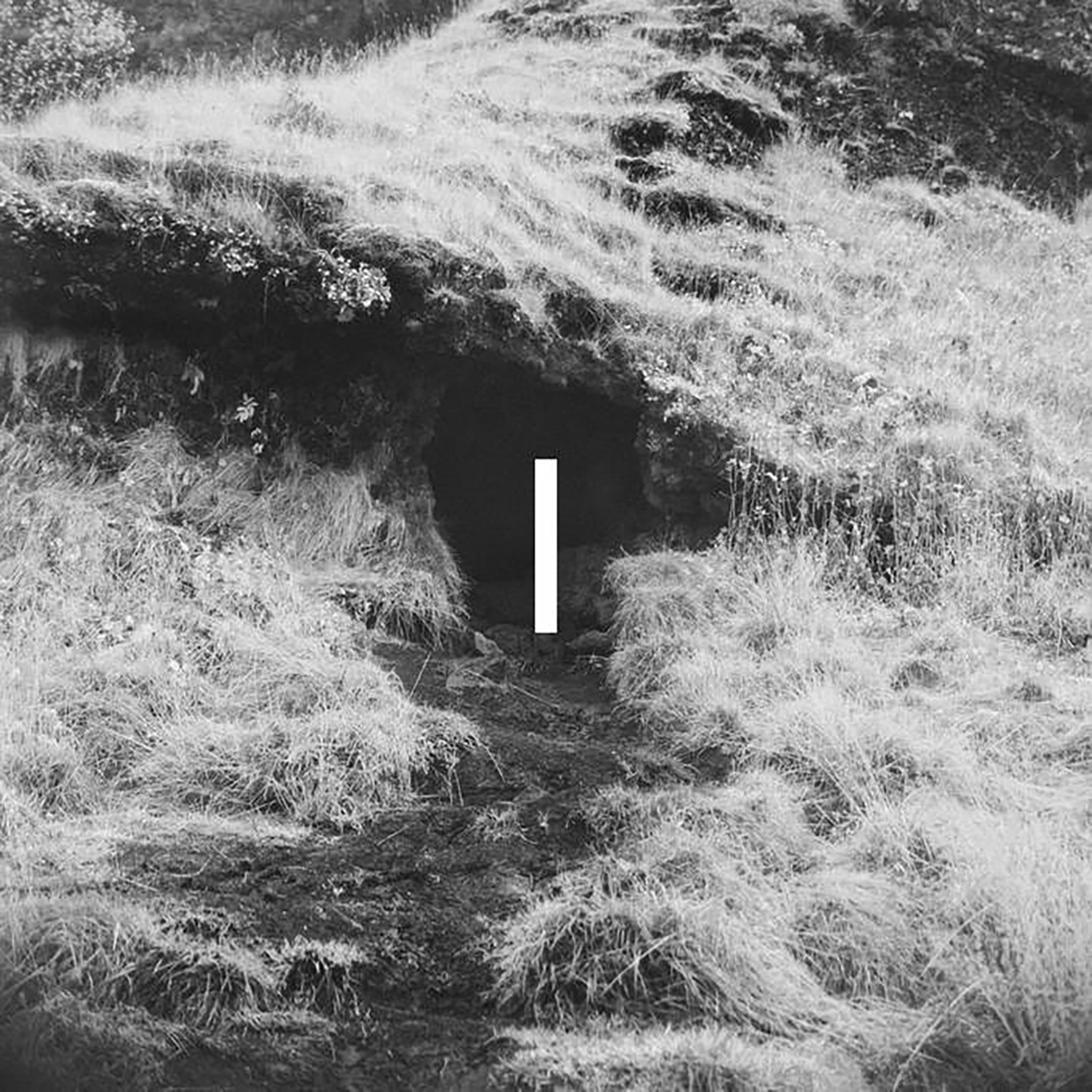
Over the last several years, it has seemed like each new Seabuckthorn release marks yet another significant creative breakthrough for Andy Cartwright. This latest one, his first for France's IIKKI Books imprint, is intended as a multimedia "dialogue" with Australian photographer Sophie Gabrielle. Given the increasingly cinematic cast of this project, composing an accompaniment for a book of stark and striking photographs is hardly a stretch, but Cartwright's vision has nevertheless grown even more sophisticated since last year's Crossing. Much like its predecessor, Through A Vulnerable Occur showcases Cartwright's ingenious and endlessly evolving talent for rendering his guitar largely unrecognizable as such, yet his emphasis on details, textures, and small scale dynamics is even more pronounced and masterful this time around. Given that Vulnerable Occur crosses the blurry line between melodic "songs" and more abstract soundscapes a bit more than previous releases, it admittedly took me a few listens to fully warm to it. Once I was fully immersed its rich tapestry of layers and nuances, however, Vulnerable Occur revealed itself to be a slow-burning masterpiece of elegantly controlled tension.
I am always fascinated and somewhat amazed whenever I encounter a virtuosic instrumentalist who is able to egolessly cast aside their technical prowess in pursuit of a bold new vision, such as laptop-era Jim O'Rourke or modular synth-era Cam Deas.On this latest release, Cartwright himself fully earns a place in that illustrious pantheon, as he now focuses entirely upon droning soundscapes of bowed strings rather than the rapidly picked, rolling arpeggios of his earlier days.Despite that ambitious transformation, a distinctive "haunted Americana" feel remains a consistent thread in Cartwright's work and he has only gotten better at evoking a complete and fully formed world of his own (as opposed to composing work that feels like a cool soundtrack in search of a suitably bleak and arty western to accompany).A lingering trace of the former Cartwright does briefly surface in the rippling melancholy arpeggios of "While There By The Woods," but the opening "Toward the Warmth" is far more representative of Seabuckthorn's current aesthetic: a slow-motion reverie of swelling strings embellished with metallic sharpness and ghostly vapor trails of decay.The most apt adjective for Cartwright's current vision is "painterly," as each piece feels like a wonderfully enigmatic, haunting, and masterfully composed scene.The analogy actually goes even deeper than that though, as Cartwright would be the kind of painter who mercilessly scrutinized every brush stroke to ensure that every single nuance felt meaningful, necessary, and right.While he might occasionally err on the side of too understated, Cartwright's instincts for detail, texture, and small-scare dynamic shifts are almost supernaturally infallible (especially on the second half of this album).
The album’s centerpiece is the eerily beautiful "Other Other," as Cartwright beautifully weaves together delicate charango arpeggios, pulsing bass tones, violin-like drones, and a spectral swirl of shimmering overtones and guitar noise.I particularly love the glimmering washes of delay-heavy harmonics that blossom in the piece's final minutes.While the first half of Vulnerable Occur contains a few highlights of its own, such the smoldering and gently undulating title piece, "Other Other" is the turning point where the album truly catches fire in earnest.Everything that follows is great, but I am especially fond of "Copper & Indigo" and "The Sunken Room."In the former, a shivering bowed motif throws off sharp harmonics as heavier metallic tones hollowly heave and reverberate in the depths.In "The Sunken Room," on the other hand, twinkling fragments of melody flutter and ripple in a gently heaving sea of blurred, anguished-sounding swells.While the simmering intensity of the album's heavier pieces understandably tends to stand out, Cartwright also does a fine job of balancing that darkness with a bit more light than usual.That expanded mood palette is both welcome and effective, as the contrast adds heft to the darker moments and makes for a more immersive, nuanced, and emotionally resonant whole.The album even closes on one of those brighter notes, as "Or A Morning Blue in the East" calls to mind the sun-dappled surface of a gently rippling pond on a warm spring day.Elsewhere, the brief "Toward the Alone" is even more radiantly lovely, approximating the healing warmth of flickering sunlight filtered through a stained glass window.
Another way in which Through a Vulnerable Occur is like a painting is that its full beauty and depth take some time to reveal themselves, much like a mysterious scene whose meaning can only be unlocked by noticing a crucial detail or the subtleties of a facial expression.Obviously, listening with headphones helped immensely in fully immersing myself in Cartwright’s vision, yet once I was drawn into its vivid details I could not stop finding other fresh aspects to fall in love with.I suppose the album works best when Cartwright combines his textural genius with some more overtly melodic themes, as he does on "Other Other," but the lion's share of what I love about the album lies in the gnarled physicality of the bowed strings, the delicate dance of harmonics and overtones, and the way the pieces twist and undulate like living entities.While I am not sure Vulnerable Occur necessarily tops the best moments on my previous favorite Seabuckthorn album (A House With Too Much Fire), it definitely feels like a stronger whole and a more perfectly realized vision.In fact, this album is exactly what I have been in the mood for recently and there is nothing else that quite scratches the same itch as this strain of simmering and subtly blackened rural psychedelia.As much as I love some other drone-inspired and experimentally minded psych-folk visionaries like The Anaksimandros, Kemialliset Ystävät, and Enhet För Fri Musik, none share anything quite like Cartwright's unwavering focus and talent for sustained, smoldering intensity.I am thrilled that his years of tireless creative evolution finally led him to this place, as Vulnerable Occur feels like the album where Seabuckthorn has finally found its true home.
Samples can be found here.
Read More
- Administrator
- Albums and Singles
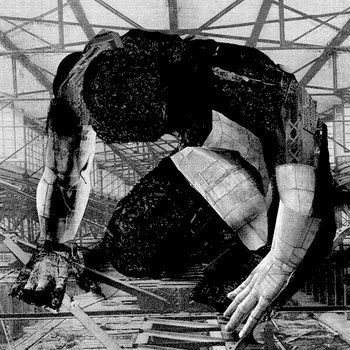
Part of an audiovisual project that was presented at Berlin Atonal, 2019.
"Massive sound research that depicts the ephemeral, post-apocalyptic world, where a new being rises out of the ruins of the old world order."
More information can be found here.
Read More
- Administrator
- Albums and Singles

Ike Yard remain a legendary band of early '80s New York City – at once immensely influential, yet obscured by a far-too-brief initial phase. Their debut EP, the dark and absorbing Night After Night, sounds almost like a different group, so rapidly would Ike Yard evolve towards the calmly menacing electro throb of their self-titled LP.
Originally released on Factory in 1982, the album put Ike Yard's indelible mark on the synth-driven experimental rock scene then emerging all over the planet. While historical analogues would be Cabaret Voltaire's Red Mecca or Front 242's Geography, opening track "M. Kurtz" makes starkly clear that Ike Yard is a far heavier proposition.
With a thick porridge of bass, ringing guitar and strangled/stunted layers of voice, these six pieces are densely packed and perversely danceable. "Loss" sounds like a minimal techno track that could have been made last week, while "Kino" combines Soviet-era imagery with sparse soundscapes à la African Head Charge's Environmental Studies.
Ike Yard somehow pull off the toughest trick in modern music: making repetition hypnotically compelling through subtle variation. The effect of Ike Yard's first LP can be heard in many genres – from industrial dance labels like Wax Trax to electro-punk bands and innumerable European groups (Lucrate Milk, Red Lorry Yellow Lorry, etc.).
The fact that the cover artwork does not include any photos of the band, but rather features the original catalogue number (FACT A SECOND) only further illustrates the release's importance and Ike Yard's timeless mystique.
More information can be found here.
Read More
- Administrator
- Albums and Singles
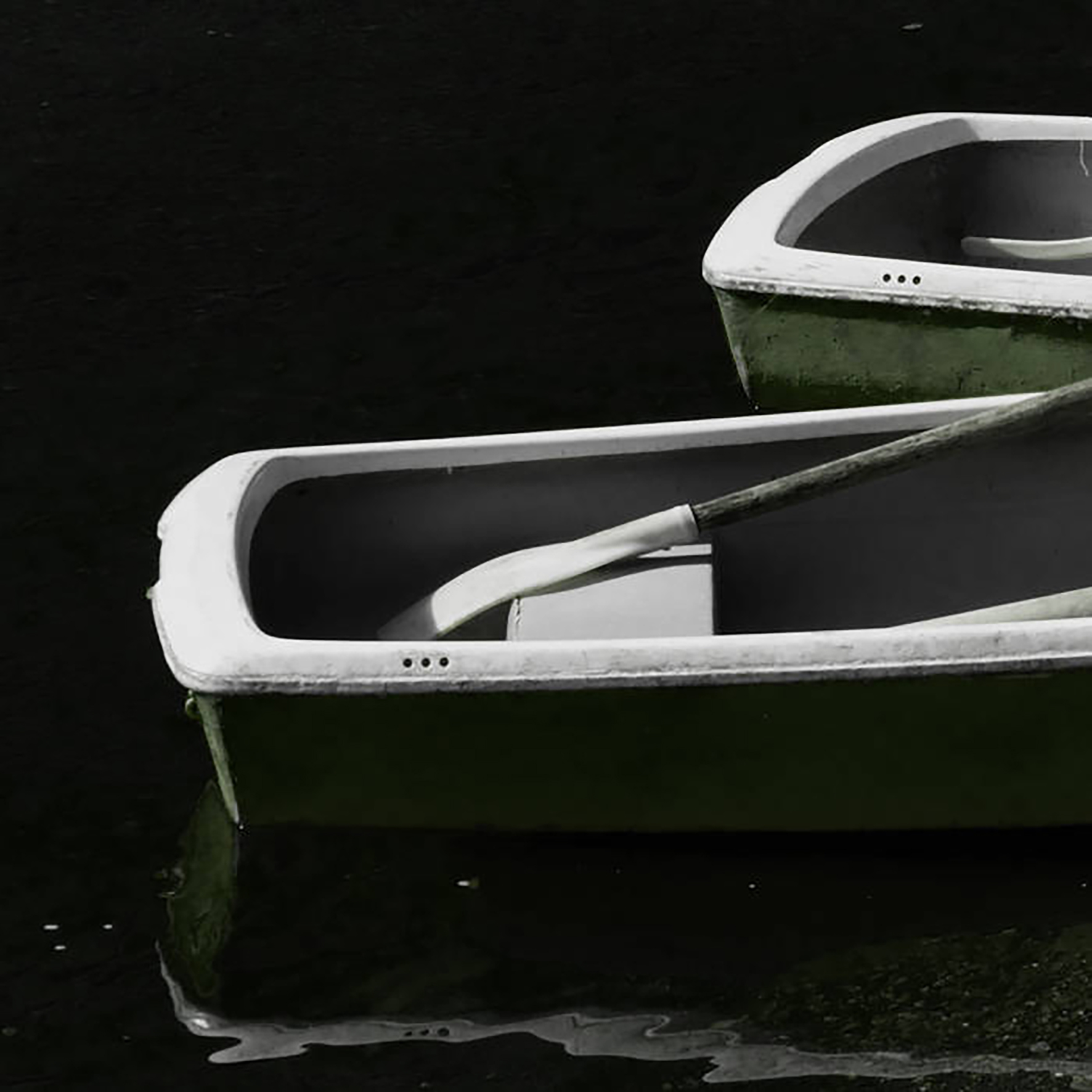 As both an experimentalist and a songwriter, Jim O’Rourke has been responsible for a number of beloved and highly influential albums over the course of his storied career, but he is a bit of a prolific wild card as well: it is damn near impossible to guess which albums will capture him in an especially inspired mood and which will not. That said, his previous collaboration with Kassel Jaeger (2017's Wakes on Cerulean) had some very promising passages that transcended typical drone/sound art fare, so I was quite curious to see if this follow-up would flesh out their shared vision into something truly great. As it turns out, In Cobalt Aura Sleeps is a hell of a lot like its predecessor: fitfully wonderful, but not without some lulls. Nevertheless, it does feel like a significant evolution, as it is both darker and more tightly focused than Cerulean, erring more on the side of "understated" and "curiously constructed" rather than "too improvisatory." Fortunately, those hurdles can be mostly overcome with the aid of some headphones and suitable volume, revealing a satisfyingly strong album that is richly textured, absorbing, and mysterious.
As both an experimentalist and a songwriter, Jim O’Rourke has been responsible for a number of beloved and highly influential albums over the course of his storied career, but he is a bit of a prolific wild card as well: it is damn near impossible to guess which albums will capture him in an especially inspired mood and which will not. That said, his previous collaboration with Kassel Jaeger (2017's Wakes on Cerulean) had some very promising passages that transcended typical drone/sound art fare, so I was quite curious to see if this follow-up would flesh out their shared vision into something truly great. As it turns out, In Cobalt Aura Sleeps is a hell of a lot like its predecessor: fitfully wonderful, but not without some lulls. Nevertheless, it does feel like a significant evolution, as it is both darker and more tightly focused than Cerulean, erring more on the side of "understated" and "curiously constructed" rather than "too improvisatory." Fortunately, those hurdles can be mostly overcome with the aid of some headphones and suitable volume, revealing a satisfyingly strong album that is richly textured, absorbing, and mysterious.
This album borrows its title from a Mikhail Lermontov poem ("Alone I Set Out on The Road") in which the author wrestles with a deep sense of hopelessness despite the pleasures of the misty landscape and a lovely canopy of stars overhead.To some extent, the album evokes a similar sense of quiet solitude and desolate nocturnal beauty, as well as its concurrent existential dread.Later in the poem, however, Lermontov expresses the wish to abandon consciousness for a blissful sleep among gently rustling leaves and the soothing sounds of "voices sweet," which is definitely where the poet and this album part ways (though In Cobalt Aura Sleeps does have a slow-motion feel of dreamlike unreality).While I would not say that the album quite crosses the line into nightmare territory, it would be a stretch to describe either half of this two-part piece as anything resembling an untroubled idyll.There are some natural night sounds drifting throughout the album though, creating an unusual balance of textures that calls to mind the haunted ruins of factory bordered by a pond populated by all manner of frogs and crickets.In the piece's first half, for example, a skeletal drum machine-like rhythm of pops and clicks emerges from an insectoid hum to settle into a quietly simmering and off-kilter groove.For a while, Jaeger and O’Rourke skillfully embellish that backdrop with ghostly feedback whines, assorted noises, and swells of distorted guitar, achieving an impressive degree of fragile, phantasmagoric beauty.Sadly, that spell was not destined to last, as all sense of structure gets sucked into a black hole of deep space abstraction around the halfway point.That said, the "stoned kosmische synth" interlude that follows is occasionally compelling, resembling a deconstructed and borderline malevolent remix of something off I'm Happy and I'm Singing.
The album's second half fades in with something that sounds like a field recording of a ghost train before resolving into a passage of heavy synth drones mingled with sputtering noise squalls and washes of enigmatic field recordings.It is considerably more menacing than the album's first half, as it has a very sickly, corroded feel as well as a prominent motif that resembles a slowed-down air raid siren.Gradually, however, the mood becomes increasingly shifting and ambiguous, blossoming into a stretch that feels like a rapturously gorgeous piece of music has been smeared into out-of-tune harmonies.Then, around the halfway point, the piece transforms into something resembling a psychedelic chorus of chirping space frogs accompanied by a sinister-sounding shimmer of dissonant synth tones.After that, the piece builds to a strange and otherworldly crescendo that seems like a mindbending collage of machine noise, beeping computers, a burbling stream, still more frogs, and some alternately brooding and blurting space rock synths.There might also be some unrecognizably warped and stretched classical music in the mix too, but the most compelling aspect of that culminating pile-up of disparate sounds is how the entire mass has the unsettling feel of a living mass that is erratically pulsing and fading in and out of focus.
My only minor grievance with Cobalt is the same one that I have with just about every collaboration between prominent experimental musicians: it seems like it was edited together from improvisations and its flashes of genuine inspiration are bridged together by passages of comparative indulgence and directionlessness.That said, the best moments on this album are damn near revelatory, so I cannot lament the meandering path that it took to get those places.The crucial thing is only that they got there at all.That said, the duo were unusually successful in shaping a solid and coherent album from their seemingly disparate vignettes.And, more importantly, there are at least two novel aesthetic niches pioneered on Cobalt that I would have loved to hear expanded into their own full-length albums.While I sincerely doubt O'Rourke and Jaeger will ever revisit those territories themselves, it was nevertheless a delight to get a glimpse of otherworldly vistas that would absolutely not otherwise exist without this album.Perhaps some other artists will someday pick up the baton and attempt to grant me my wish, but they will have an extremely tough act to follow if they do, as O'Rourke and Jaeger share quite a unique sensibility that merges masterful lightness of touch with bold experimentation.Obviously, both artists have produced plenty of wonderful and compelling work on their own, but in the realm of pure creativity, this formidable union sometimes feels even greater than the sum of its parts.
Samples can be found here.
Read More
- Administrator
- Albums and Singles
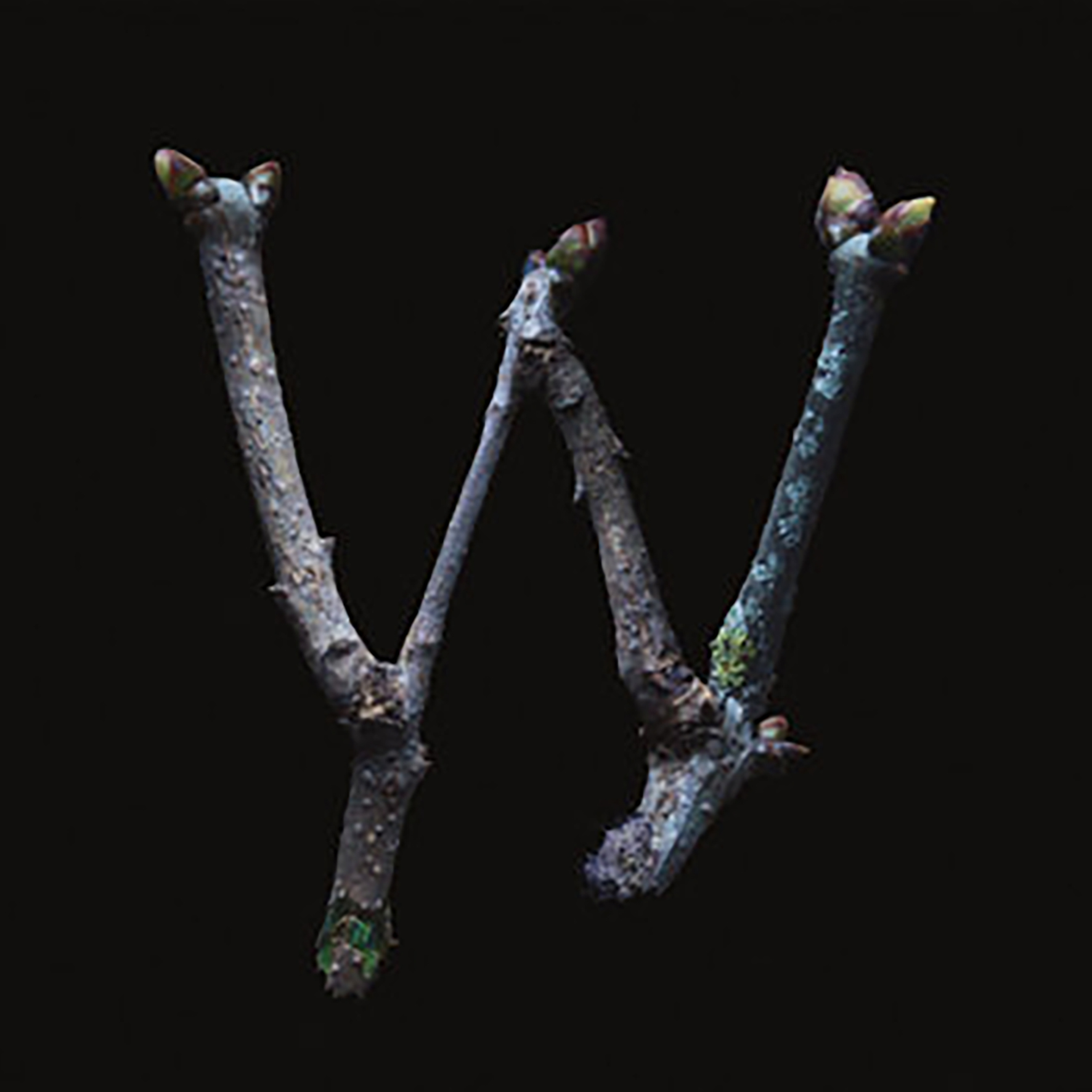 I am an enormous fan of this latest endeavor from Ulan Bator founder Amaury Cambuzat, as AmOrtH was easily one of my favorite albums of 2019. Notably, this latest release marks the project's vinyl debut, which makes it the first album in which Cambuzat's real-time layering has had to contend with actual time constraints. I was not sure how well that would work, as the core Cathedral aesthetic has always been to allow pieces to unhurriedly and organically unfold until they complete their "natural" progression (and the project's crowning achievement thus far is a piece that stretched out for 40 glorious minutes). As it turns out, however, Cambuzat handled that challenge quite well. Given the greatness of the opening "Indignation," it is entirely possible that he simply had a killer 20-minute piece in the vault just waiting for this opportunity to arise, but it is equally possible that he mathematically converted that duration into a fixed number of heartbeats and simply worked from that. While the B-side is admittedly a more minor pleasure, I remain continually amazed by the depth and breadth of what Cambuzat can achieve with just a guitar and some pedals. This is yet another excellent release.
I am an enormous fan of this latest endeavor from Ulan Bator founder Amaury Cambuzat, as AmOrtH was easily one of my favorite albums of 2019. Notably, this latest release marks the project's vinyl debut, which makes it the first album in which Cambuzat's real-time layering has had to contend with actual time constraints. I was not sure how well that would work, as the core Cathedral aesthetic has always been to allow pieces to unhurriedly and organically unfold until they complete their "natural" progression (and the project's crowning achievement thus far is a piece that stretched out for 40 glorious minutes). As it turns out, however, Cambuzat handled that challenge quite well. Given the greatness of the opening "Indignation," it is entirely possible that he simply had a killer 20-minute piece in the vault just waiting for this opportunity to arise, but it is equally possible that he mathematically converted that duration into a fixed number of heartbeats and simply worked from that. While the B-side is admittedly a more minor pleasure, I remain continually amazed by the depth and breadth of what Cambuzat can achieve with just a guitar and some pedals. This is yet another excellent release.
Given that all I Feel Like A Bombed Cathedral releases are essentially composed the exact same way, Cambuzat wisely did not bother to provide much information about W's creation or inspiration at all.Instead, he opted for the far more appropriate alternative of creating a black and white promotional video of masked and hooded figures lurking ominously in a bleak winter forest.The video has a very creepy "found footage" feel akin to The Blair Witch Project, which is very much an appropriate mood to convey for W's first half (and much of the project's past work as well).While I cannot say that I am a huge fan of black metal imagery in general (at least not unironically), the image of Cambuzat as a lone, sorcerer-like figure haunting ruins and stark landscapes is a decidedly apt one, as it both distances this project from more ambient-minded experimental guitarists and emphasizes its ritualistic nature.At its best, I Feel Like A Bombed Cathedral seems to lie somewhere between a trance state and a sort of ecstatic catharsis, as Cambuzat patiently builds harmonically rich and emotionally resonant soundscapes through the exacting accretion of layers.Much like the similarly hooded Sunn O))), Cambuzat shares a lot of common ground with drone music, yet strives to transcend the form with a more maximalist approach to dynamics and intensity.Unlike Sunn O))), however, the beauty of Cambuzat's work lies in steadily deepening and darkening harmonies rather than seismic vibrational power.
On the opening "Indignation," a single sustained note slowly undulates for roughly an entire minute before Cambuzat begins to unfold a slow-motion melody of swelling tones.The piece soon takes on an eerie and majestic feel, but it does not linger in that shadowy, dreamlike state for long, as a bass-heavy heartbeat pulse soon injects a propulsive sense of purpose and forward motion.As the heartbeat insistently throbs away, the layers of drones sneakily expand like fresh streaks of color in a haunting, smog-blurred sunset.Cambuzat then intensifies the pulse of the piece through rhythmic splashes of chiming chords and that is the point where the incredible intricacy and precision of the piece starts to fully manifest itself, as some chords are deliberately out of phase or dissonant.It is a beguiling balance of clarity, shadow, subtlety, and force, yet it gets even better when Cambuzat finally stomps his distortion pedal and the piece blossoms into wonderfully roiling sea of shifting, intertwined layers.Even when the piece is at its full power, however, there is the ghost of a submerged melody lurking behind the cacophony.It is a truly masterful feat of patience and elegantly controlled visceral intensity.The following "Fear & Disorder," on the other hand, takes a very different direction, as Cambuzat's web of guitar loops embraces a very hazy and impressionistic tone, evoking a languorous bed of flutes and strings.It is initially an unexpectedly warm and tender piece, resembling a time-stretched and deconstructed Debussy homage, but it gradually transforms into something evoking a desolate, windswept plane.In its final moments, however, it unexpectedly opens up into slow-burning and darkly hallucinatory coda of blackened bass rumble and dissonant smears of spectral guitars that feel wonderfully supernatural.Admittedly, the piece takes quite some time to get to that point, but it is an impressive pay-off nonetheless.
As far as I know, Cambuzat is still fully devoted to performing all of his pieces in real-time for this project, so some feats simply take longer to lay the appropriate groundwork for than others.Viewed in that light, "Fear & Disorder" is a fascinating performance and a bold step outside the project's comfort zone rather than a composition in need of tighter editing.When Cambuzat is at his best, however, he easily transcends the challenges and limitations of his unusual working methods: "Indignation" is gripping right from its first note and only gets better from there.In fact, it is downright astonishing that this side of Cambuzat's artistry has only recently been revealed, as he is a goddamn drone shaman—I cannot think of any similar artists who share his seemingly unerring intuitions for texture, flow, tension, focus, or well-timed slashes of controlled violence.From an execution standpoint, Cambuzat is likely a man without peer.It legitimately boggles my mind that this project is not more well-known and appreciated than it is, especially in the wake of AmOrtH.As far as I am concerned, that album still remains Cathedral's zenith, but W is not too far behind and "Indignation" adds yet another instant classic to Cambuzat's growing pile.
Samples can be found here.
Read More
- Administrator
- Albums and Singles
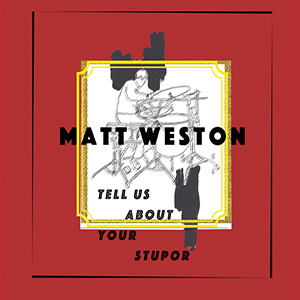 With A New Form of Crime coming out last fall, and a new double LP on the horizon, Matt Weston has been prolific as of late. One thing that sets Tell Us About Your Stupor apart from these other albums, however, is that it is a live recording, although that of an installation project rather than a traditional concert setting. That is an important distinction to make because, having seen Weston perform on multiple occasions, the live experience is a significantly different animal, and that is clearly captured here. As an installation, it would seem that this is more of a live performance augmented by other instruments or recordings rather than a purely live, solo recording, but it has an exceptional balance between live Weston and studio Weston.
With A New Form of Crime coming out last fall, and a new double LP on the horizon, Matt Weston has been prolific as of late. One thing that sets Tell Us About Your Stupor apart from these other albums, however, is that it is a live recording, although that of an installation project rather than a traditional concert setting. That is an important distinction to make because, having seen Weston perform on multiple occasions, the live experience is a significantly different animal, and that is clearly captured here. As an installation, it would seem that this is more of a live performance augmented by other instruments or recordings rather than a purely live, solo recording, but it has an exceptional balance between live Weston and studio Weston.
While attending a Matt Weston performance with a friend of mine, my friend (who is not well versed in experimental or avant garde type music) remarked that "he plays the drums wrong."Not in a demeaning sense, but succinctly summarizing Weston's live approach.Sure, there is usually a traditional drum kit set up, with some additional found objects scattered about, but with Weston's (mis)use of the instrument is what makes his work so unique.His rapid fire playing, heavily informed by free jazz and improvisation, rarely hits the drums in the conventional sense, but instead he focuses on the sides of the drums themselves, the stands on which they are set up, objects he has placed on them, etc.
The recent studio albums from Weston have been centered largely around electronics and processing and while drums often could be heard, they were never the focus, nor did they have the intensity of his performances.Here, however, that comes through a bit more clearly.The first side, "Don't Yell or Hit," opens with classic live Weston sounds.Erratic (though structured) drum sounds and various rattling objects cut through, with the occasional tympani outburst to punctuate things nicely.It is not solely drums and percussion to be heard, however.Electronics appear throughout, sometimes mimicking pained horns, other times being nice, noisy additions to flesh out the sound.To this he adds a myriad of skittering junk, bells, bird calls, etc., resulting in a work that is intensely chaotic, but carefully considered and improvised in the classic sense.
On the other side, "Stop With The Brushing" opens with a noise that could either be a synthesizer burst or horn squelching, with some processed voices thrown in for good measure.Weston punctuates this with deep, heavy drum thuds, metallic clanging, and the occasional outburst of found sound clatter, but compared to the A side there is a bit more breathing room to be had.Overall, however,it is a darker feeling work, however, with an emphasis on lower registers and heavily uses of reverb, with shimmering, serrated electronics cutting through.
One of the things I greatly appreciate about Tell Us About Your Stupor is how Matt Weston is able to clearly present both his stripped-down percussion live work and his electronic experiments together.His studio records are all exceptional, and I am very eager to hear the new one he is working on, but I also love his pure percussion excursions as well.It may not have the same impact as seeing him perform live, but it is an acceptable approximation, especially in this current time where it is questionable when the next show will be performed anywhere.I imagine this is going to be an excellent companion work to his new material, but it also stands quite well on its own.
Read More
- Administrator
- Albums and Singles
 Enigmatic Afro-Transcendentalist figure Laraaji has a long, fascinating history with music and is still very active at the age of 76. He is known for being "discovered" by Brian Eno, and working with such underground darlings as Sun Araw, Dallas Acid, and Blues Control. He studied piano composition in college, and then found himself with Eastern mysticism and began improvising with zithers and mbira. This album finds him returning to his roots with an all instrumental piano meditation.
Enigmatic Afro-Transcendentalist figure Laraaji has a long, fascinating history with music and is still very active at the age of 76. He is known for being "discovered" by Brian Eno, and working with such underground darlings as Sun Araw, Dallas Acid, and Blues Control. He studied piano composition in college, and then found himself with Eastern mysticism and began improvising with zithers and mbira. This album finds him returning to his roots with an all instrumental piano meditation.
All Saints
Recorded in a church on what sounds like a grand piano, these pieces have an open air feeling that fills in and traces the contours of that large hall. I can envision the sunlight streaming in the sanctuary as if by divine light, and the character of these pieces matches the peacefulness of that setting.
Harmonically, these brief songs are actually similar in sound to certain turn of the 19th century composers such as Scriabin, Revel, and Debussy. As one track title suggests, "Flow Joy," the pieces unfold like a joyful conversation, meandering gently and contemplatively with a bright outlook and some hints of the 1950s African-American music that influenced Laraaji as a child. He skitters lightly around the keyboard, only to include a sudden idea of a blues lick, or a diversion into a march like a gospel chorale.
The whole album is so airy and dreamy that it would suit as music for one of Laraaji's laughter meditation workshops well. Deep listening is transportive to a lighter emotional plane, something I think we could all use during these times of challenge and stress. Sun Piano is the first release in a trilogy from the same session, and follows the full length releases Sun Gong, Bring on the Sun, and Sun Transformations also on All Saints. A companion LP, Moon Piano, and an extended EP of piano/autoharp duets will follow later in 2020.
 
Read More
- Administrator
- Albums and Singles
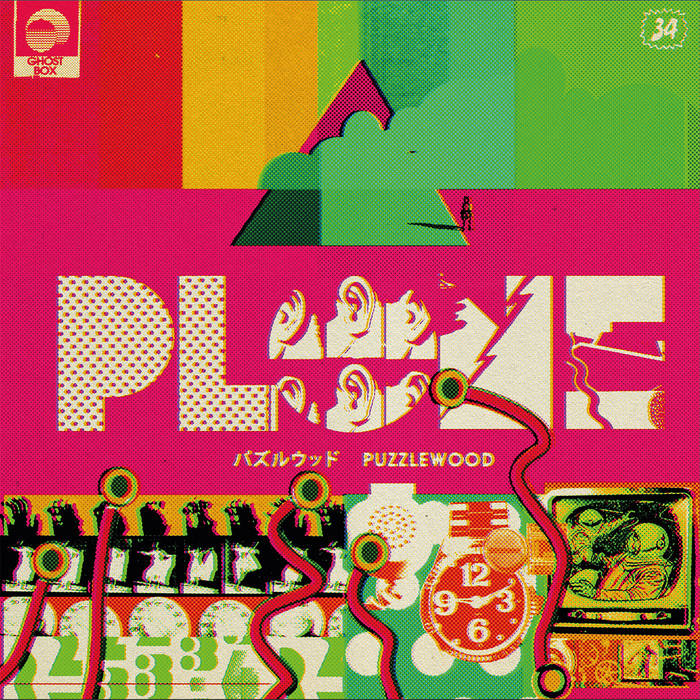 Plone's album Puzzlewood continues in their very specific oeuvre of midtempo music with a playful, childlike hue to it. It's all soft edges and singable tunes in a digital mishmash that includes electronics, synths, trumpet, piano, guitar, strings, and exotic percussion. This happy orchestration yields bite sized songs full of lift and happiness. The album is a comeback after a twenty year absence, and although the genre they helped pioneer has fallen out of favor, their self-consciously retro sound makes their music a timeless affair.
Plone's album Puzzlewood continues in their very specific oeuvre of midtempo music with a playful, childlike hue to it. It's all soft edges and singable tunes in a digital mishmash that includes electronics, synths, trumpet, piano, guitar, strings, and exotic percussion. This happy orchestration yields bite sized songs full of lift and happiness. The album is a comeback after a twenty year absence, and although the genre they helped pioneer has fallen out of favor, their self-consciously retro sound makes their music a timeless affair.
 
Ghost Box
Plone experiments with different styles and influences. "Miniature Magic" has a vintage, groovy feel to it that is quintessential to Plone's sound. "Watson's Telescope" is another 1970's throwback with a swinging pulse. "The Model Village" dabbles in Latin American rhythms for a springtime hit. "Circler" is the scaled down song, enveloped in strings and a creamy synth lead with nods to classical music. Many of these songs have a kickin', hammered drum track, including "Chalk Stream," "Build a Small Fire," and "Day Trip." One of the few songs with vocal samples, "Sarcelle," is a zany uptempo jam that calls to mind pillow fights and jumping on the bed.
Puzzlewood is very relaxed with dense, layered production and a strong sense of humor. The light touch and infectious character lends it to bouncing around and movement in general. This is a great spin for a party, or just for party people.
Read More
- Administrator
- Albums and Singles
 On Microphone Permission, Jasmine Guffond has created some truly rapturous detours and alleyways in sound. The ever shifting musical landscape is like an aural house of mirrors, though there is nothing circus-like about this project. It contains inward, reflective compositions—at times somber and at other times buzzing about—but always interesting and beautiful.
On Microphone Permission, Jasmine Guffond has created some truly rapturous detours and alleyways in sound. The ever shifting musical landscape is like an aural house of mirrors, though there is nothing circus-like about this project. It contains inward, reflective compositions—at times somber and at other times buzzing about—but always interesting and beautiful.
 
Editions Mego
"Forever Listening" is a standout song and the opening introduction to the album. It is a malleable collection of chromatic bends and sly arches of sound made with lovely, eerie harmonies. "Dotcompound" opens sounding like something from Edgar Allan Poe's chambers with its creaks and rattles and trilling, ghostly strings. Oddly, it evolves into something that could be heard at a 1980s throwback club, with synth pads and digital drums.
"Default Cultures" is another highlight, with a locomotion to it that is oddly reminiscent of Kraftwerk. Doll-like female vocals spackle this short, angular song. "An Utterly Dark Spot" is a fine conclusion to the album, opening like a question mark and evolving into a twelve minute sketch of a ride through a tunnel, with bell-like tones bouncing off the smooth enclosed walls and gentle vocals daubing the warm, scratchy bed of static.
I loved this album. It has a certain continuity of story to it as an album even though each song is remarkably unique.
Read More
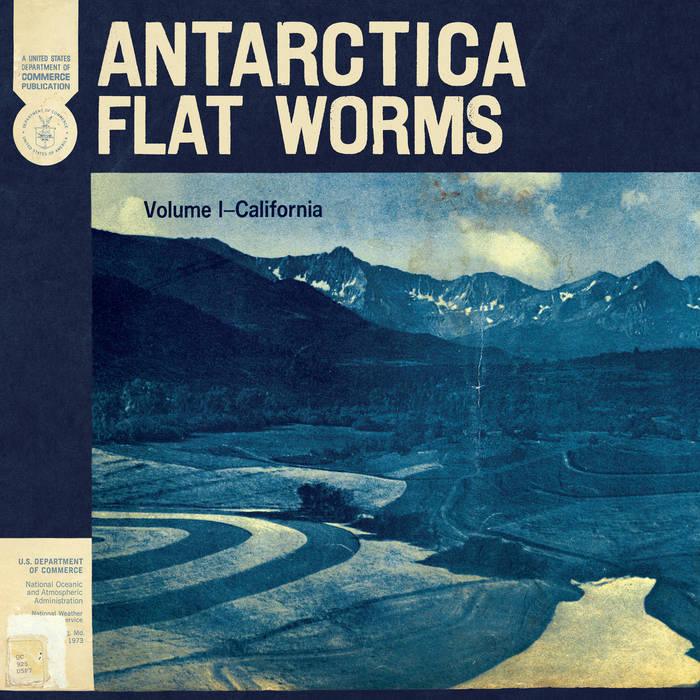 Los Angeles' Flatworms kicked off their career creating psychedelic-tinged and feedback-driven guitar riffs embedded in a foundation of high-octane garage punk, with lyrical content to match. The latest direction finds the trio of vocalist and guitarist Will Ivy, drummer Justin Sullivan and bassist Tim Hellman (Ty Segall, Oh Sees) painting on a less fuzzy canvas, with a more refined sound and finer songwriting precision, with both Steve Albini and Ty Segall in the engineering booth. Segall's '60s psychedelic influence can be felt here, as well as Albini's commitment to high fidelity, but some of the musical experimentation heard on their prior work has been traded in for a more well-oiled machine, albeit a well-oiled machine with punk sizzle.
Los Angeles' Flatworms kicked off their career creating psychedelic-tinged and feedback-driven guitar riffs embedded in a foundation of high-octane garage punk, with lyrical content to match. The latest direction finds the trio of vocalist and guitarist Will Ivy, drummer Justin Sullivan and bassist Tim Hellman (Ty Segall, Oh Sees) painting on a less fuzzy canvas, with a more refined sound and finer songwriting precision, with both Steve Albini and Ty Segall in the engineering booth. Segall's '60s psychedelic influence can be felt here, as well as Albini's commitment to high fidelity, but some of the musical experimentation heard on their prior work has been traded in for a more well-oiled machine, albeit a well-oiled machine with punk sizzle.
- Administrator
- Albums and Singles
 Los Angeles' Flatworms kicked off their career creating psychedelic-tinged and feedback-driven guitar riffs embedded in a foundation of high-octane garage punk, with lyrical content to match. The latest direction finds the trio of vocalist and guitarist Will Ivy, drummer Justin Sullivan and bassist Tim Hellman (Ty Segall, Oh Sees) painting on a less fuzzy canvas, with a more refined sound and finer songwriting precision, with both Steve Albini and Ty Segall in the engineering booth. Segall's '60s psychedelic influence can be felt here, as well as Albini's commitment to high fidelity, but some of the musical experimentation heard on their prior work has been traded in for a more well-oiled machine, albeit a well-oiled machine with punk sizzle.
Los Angeles' Flatworms kicked off their career creating psychedelic-tinged and feedback-driven guitar riffs embedded in a foundation of high-octane garage punk, with lyrical content to match. The latest direction finds the trio of vocalist and guitarist Will Ivy, drummer Justin Sullivan and bassist Tim Hellman (Ty Segall, Oh Sees) painting on a less fuzzy canvas, with a more refined sound and finer songwriting precision, with both Steve Albini and Ty Segall in the engineering booth. Segall's '60s psychedelic influence can be felt here, as well as Albini's commitment to high fidelity, but some of the musical experimentation heard on their prior work has been traded in for a more well-oiled machine, albeit a well-oiled machine with punk sizzle.
GOD? Records / Drag City
The title of the album speaks to today's society as a barren wilderness, as cold and barren as Antarctica, and its inhabitants devoid of empathy. Album opener "The Aughts" was inspired by Ivy's trip to the ruins of the Tomb of the Kings in Cyprus, lamenting the end of a once grand civilization, failures laid bare as if in a wasteland, and this and other tracks carry a similar theme: if we do not learn from our mistakes and fly right, we stand to be what Antarctica became, in culture, community, climate and beyond. Tracks like "Market Forces" and "Mine" take shots at just some of the forces pushing society in that direction. It's a bleak concept with angry energy crackling throughout the entire album, but not all is without hope if we cooperate to turn the ship around, as tracks like "Via" attest. "If I follow the fallen's path / I walk to my own demise / Can't burn the history / But I can try to rebuild."
Yet, the musical formula that Flat Worms used so successfully in the past is diminished here. Gone are the buzzy melodies, modulated noise, focused vocal blasts, and messy, chaotic riffs, in favor of cleaner fidelity and more formulaic melody. The concept of the album is worth exploring, but the delivery of the message falls short. This, their second full-length delivery, was recorded in a mere six days in Steve Albini's Electrical Audio studio. With such a quick turnaround it might be expected that the same fuzzed out chaos is present here, but its presence is felt much less. While the album offers plenty of energy, the production washes away some of the rawness, unique flourishes, and personality that made the self-titled album so memorable.
Sound samples can be found here.
 
Read More

